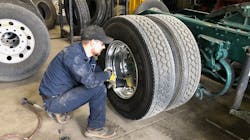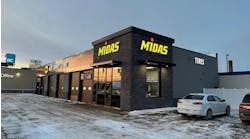With 2024 right around the corner, we should all be thinking through how we’ll plan for another successful year. By most measures, 2023 has been a very solid year. The last few years have proven challenging, but very beneficial for those that adapted.
With 2021 and 2022 fading into the distance, we’ve settled into a fairly consistent market. Now that drastic impacts to our business are mostly behind us, at least for now, the dust has settled.
We all know one of the best predictors of future behavior is past behavior, so let’s take a look at what we’ve seen from our 300-plus rooftop vista at Dealer-to-Dealer Development Group in the past year. Year over year, here’s what we’re seeing year-to-date average per location.
Sales have risen 10.1%, for a total increase of $152,000.
Gross profit dollars have risen 10.05% for a total increase of $82,000. What’s notable here is that our average gross profit percentage, year-to-date is 55.8%, up half a point.
Take note that we very intentionally separate payroll dollars from gross profit dollars in our benchmarks. (Your employees are your most valuable asset.)
Payroll as a percentage of gross profit is up 0.72%, for a total payroll dollar increase of $43,000. This lands it at 47% of gross profit.
Also notable here is our 42.5% payroll to gross dollar benchmark. While it’s great to see additional gross dollars being spent on payroll, it’s counter-intuitive to have your gross dollars rise so significantly and the payroll percent of those gross dollars increase as a percentage, as well.
That said, this plays out in a significant way, which I’ll get into in a moment. (By the way, non-payroll operating expenses are down 1.6% of sales. All this translates to a 1.3% increase in net. Nice!)
There are two pieces of data that I’d like to call your attention to. One, the increase in sales and gross profit dollars per invoice, and two, the rate at which payroll dollars have increased versus the rate at which gross profit dollars have increased:
Sales and gross profit dollars per invoice: With inflation, we expected dollars per invoice to be up. What we didn’t expect is the increase in gross profit dollar per invoice significantly outpacing the increase in sales dollars per invoice. Why? What does it mean?
First, it means our mix of business has changed. While tire dollars have risen, service and parts dollars have risen more. With parts and service dollars at a higher margin than tires, you net down at a faster rate. In other words, we’re getting more out of every invoice. This is not only healthy, but necessary.
The number of rooftops in our industry continues to grow — likely eating into some of your market share (i.e., decreased invoice count), which we’ve seen.
Payroll dollar increase versus gross dollar increase: Year-over-year, our single largest and most important asset also happens to be our largest single expense: payroll. As gross dollars increase, we expect the payroll percentage of those dollars to decrease, at least if you have a quid-pro- quo set of compensation plans.
What we’re seeing this year is the opposite of that. We’re seeing the payroll increase as a percentage outpace the gross dollar increase as a percentage year-over-year. This says two things. One, we gave the very necessary wage increases largely on an hourly basis, rather than an efficiency basis. No bueno! And two, these types of wage increases will continue to negatively affect payroll as a percentage of gross profit, and thus, net profits until a change is made.
Typically, changing pay plans should be the last thing we consider to improve profitability. Just as some learned years ago that paying on a percent of sales was a long-term losing battle, we need to also learn that paying a flat hourly rate — plus some version of commission — doesn’t drive the behaviors to efficiently operate a long-term, profitable model.
If you’ve given a wage increase that isn’t tied to production, you need to seriously consider how this will affect you, moving forward, especially if your invoice count is down year-over year.
We all know “culture” is a buzzword these days. I believe your team members want a form of ownership in their role, with the support of the business, to help everyone communally achieve their goals. Most of your play plans probably don’t do that, but they should. The new year is just around the corner. Let’s get after it!




